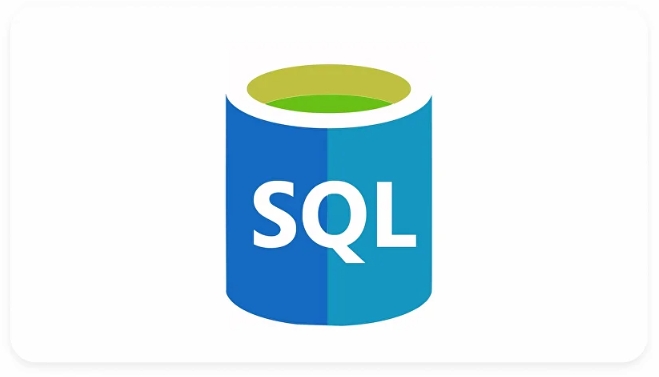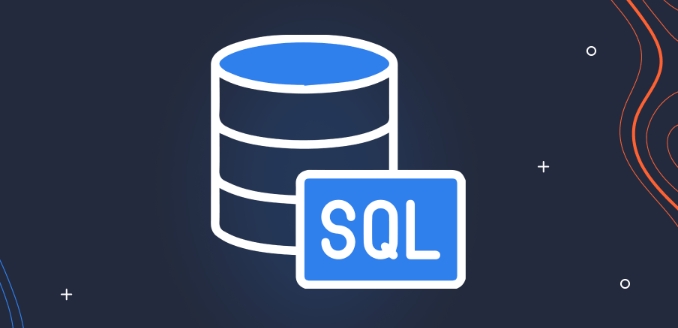The key to combining SQL with DevOps is to treat database changes as code management to ensure version control, automated testing and deployment; 1. Database structure changes should be changed using version control, and orderly SQL scripts that can be executed repeatedly, and automatically executed with Flyway or Liquibase; 2. Automated testing is essential, query tests and unit tests should be written to automatically run in CI to prevent regression problems; 3. When integrating SQL changes in CI/CD, scripts should be idempotent, management changes history should be managed, and dry runs should be performed before deployment; 4. Data migration should be operated with caution, performed in stages, processed at low peaks, backups and drills in advance to ensure the safety of the production environment.

The combination of SQL and DevOps is actually not that complicated, but many teams will still get trapped in practice. The key point is to enable database changes to be versioned, tested and deployed automatically like code. The following aspects are relatively important but easy to ignore in actual operation.

Version control is the basis, but many people don't do it right
If the database structure changes (such as adding fields and changing indexes) are not implemented, it is easy to cause inconsistency in the environment. Many teams are also manually executing SQL scripts, which is prone to errors.
The recommended approach is:

- Each structure change is written as a repeatable SQL script
- Save it in the repository in sequence, such as
V1_01__add_user_table.sql - Automatic execution of these scripts using tools such as Flyway or Liquibase
- Put database changes and application code in the same repository to maintain consistency
This not only facilitates rollback, but also facilitates automatic execution in the CI/CD pipeline.
Automated testing is indispensable, especially regression testing
Once a database change occurs, the impact is often great. For example, if a field is changed in type, it may make the entire service unable to be raised. Therefore, automated testing is particularly important.

What you can do is:
- Write some basic query tests to verify whether the table structure is correct
- Logically write unit tests on key data (such as using tSQLt or pgTAP )
- Automatically run these tests in the CI before each merge change
- The test data must also be versioned to ensure that each test environment is consistent
Many people will ignore this part, but once it is established, it can greatly reduce online accidents.
Be careful with order and dependency when integrating SQL changes in CI/CD
Performing database changes in pipelines is more sensitive than deploying code. For example, if multiple services rely on a table at the same time, if the order is wrong, problems may arise.
A few points to note:
- Each change script must be idempotent or can detect whether it has been executed
- Use tools to manage change history and avoid repeated execution
- Do a "dry run" before deployment, such as generating a change plan
- If it is a multi-environment deployment (dev/staging/prod), make sure that the script can run in every environment
For example, in GitLab CI or GitHub Actions, SQL changes can be used as part of the deployment process and scripts to connect to the database to perform changes.
Data migration should be cautious, especially in production environments
Sometimes structure changes will also involve data migration, such as demolishing fields, merging tables, converting types, etc. This type of operation is particularly dangerous in production environments.
Consider:
- In stages: add new fields first, then migrate data, and finally delete old fields
- Execute at low peaks, or in the deployment window
- Back up data in advance, even if you export a SQL file
- Write a rollback script in case
This type of operation is recommended to practice it in the test environment first to confirm that the table will not be locked for too long and will not cause the service to be unavailable.
Basically that's it. The key to combining SQL and DevOps is to manage the database as "code", and with testing and automation, safe and controllable changes can be achieved.
The above is the detailed content of SQL Best Practices for DevOps Integration. For more information, please follow other related articles on the PHP Chinese website!

Hot AI Tools

Undress AI Tool
Undress images for free

Undresser.AI Undress
AI-powered app for creating realistic nude photos

AI Clothes Remover
Online AI tool for removing clothes from photos.

Clothoff.io
AI clothes remover

Video Face Swap
Swap faces in any video effortlessly with our completely free AI face swap tool!

Hot Article

Hot Tools

Notepad++7.3.1
Easy-to-use and free code editor

SublimeText3 Chinese version
Chinese version, very easy to use

Zend Studio 13.0.1
Powerful PHP integrated development environment

Dreamweaver CS6
Visual web development tools

SublimeText3 Mac version
God-level code editing software (SublimeText3)

Hot Topics
 How to use IF/ELSE logic in a SQL SELECT statement?
Jul 02, 2025 am 01:25 AM
How to use IF/ELSE logic in a SQL SELECT statement?
Jul 02, 2025 am 01:25 AM
IF/ELSE logic is mainly implemented in SQL's SELECT statements. 1. The CASEWHEN structure can return different values ??according to the conditions, such as marking Low/Medium/High according to the salary interval; 2. MySQL provides the IF() function for simple choice of two to judge, such as whether the mark meets the bonus qualification; 3. CASE can combine Boolean expressions to process multiple condition combinations, such as judging the "high-salary and young" employee category; overall, CASE is more flexible and suitable for complex logic, while IF is suitable for simplified writing.
 How to create a temporary table in SQL?
Jul 02, 2025 am 01:21 AM
How to create a temporary table in SQL?
Jul 02, 2025 am 01:21 AM
Create temporary tables in SQL for storing intermediate result sets. The basic method is to use the CREATETEMPORARYTABLE statement. There are differences in details in different database systems; 1. Basic syntax: Most databases use CREATETEMPORARYTABLEtemp_table (field definition), while SQLServer uses # to represent temporary tables; 2. Generate temporary tables from existing data: structures and data can be copied directly through CREATETEMPORARYTABLEAS or SELECTINTO; 3. Notes include the scope of action is limited to the current session, rename processing mechanism, performance overhead and behavior differences in transactions. At the same time, indexes can be added to temporary tables to optimize
 How to get the current date and time in SQL?
Jul 02, 2025 am 01:16 AM
How to get the current date and time in SQL?
Jul 02, 2025 am 01:16 AM
The method of obtaining the current date and time in SQL varies from database system. The common methods are as follows: 1. MySQL and MariaDB use NOW() or CURRENT_TIMESTAMP, which can be used to query, insert and set default values; 2. PostgreSQL uses NOW(), which can also use CURRENT_TIMESTAMP or type conversion to remove time zones; 3. SQLServer uses GETDATE() or SYSDATETIME(), which supports insert and default value settings; 4. Oracle uses SYSDATE or SYSTIMESTAMP, and pay attention to date format conversion. Mastering these functions allows you to flexibly process time correlations in different databases
 What is the purpose of the DISTINCT keyword in a SQL query?
Jul 02, 2025 am 01:25 AM
What is the purpose of the DISTINCT keyword in a SQL query?
Jul 02, 2025 am 01:25 AM
The DISTINCT keyword is used in SQL to remove duplicate rows in query results. Its core function is to ensure that each row of data returned is unique and is suitable for obtaining a list of unique values ??for a single column or multiple columns, such as department, status or name. When using it, please note that DISTINCT acts on the entire row rather than a single column, and when used in combination with multiple columns, it returns a unique combination of all columns. The basic syntax is SELECTDISTINCTcolumn_nameFROMtable_name, which can be applied to single column or multiple column queries. Pay attention to its performance impact when using it, especially on large data sets that require sorting or hashing operations. Common misunderstandings include the mistaken belief that DISTINCT is only used for single columns and abused in scenarios where there is no need to deduplicate D
 What is the difference between WHERE and HAVING clauses in SQL?
Jul 03, 2025 am 01:58 AM
What is the difference between WHERE and HAVING clauses in SQL?
Jul 03, 2025 am 01:58 AM
The main difference between WHERE and HAVING is the filtering timing: 1. WHERE filters rows before grouping, acting on the original data, and cannot use the aggregate function; 2. HAVING filters the results after grouping, and acting on the aggregated data, and can use the aggregate function. For example, when using WHERE to screen high-paying employees in the query, then group statistics, and then use HAVING to screen departments with an average salary of more than 60,000, the order of the two cannot be changed. WHERE always executes first to ensure that only rows that meet the conditions participate in the grouping, and HAVING further filters the final output based on the grouping results.
 Defining Database Schemas with SQL CREATE TABLE Statements
Jul 05, 2025 am 01:55 AM
Defining Database Schemas with SQL CREATE TABLE Statements
Jul 05, 2025 am 01:55 AM
In database design, use the CREATETABLE statement to define table structures and constraints to ensure data integrity. 1. Each table needs to specify the field, data type and primary key, such as user_idINTPRIMARYKEY; 2. Add NOTNULL, UNIQUE, DEFAULT and other constraints to improve data consistency, such as emailVARCHAR(255)NOTNULLUNIQUE; 3. Use FOREIGNKEY to establish the relationship between tables, such as orders table references the primary key of the users table through user_id.
 What is a sequence object in SQL and how is it used?
Jul 02, 2025 am 01:21 AM
What is a sequence object in SQL and how is it used?
Jul 02, 2025 am 01:21 AM
AsequenceobjectinSQLgeneratesasequenceofnumericvaluesbasedonspecifiedrules,commonlyusedforuniquenumbergenerationacrosssessionsandtables.1.Itallowsdefiningintegersthatincrementordecrementbyasetamount.2.Unlikeidentitycolumns,sequencesarestandaloneandus
 Key Differences Between SQL Functions and Stored Procedures.
Jul 05, 2025 am 01:38 AM
Key Differences Between SQL Functions and Stored Procedures.
Jul 05, 2025 am 01:38 AM
SQLfunctionsandstoredproceduresdifferinpurpose,returnbehavior,callingcontext,andsecurity.1.Functionsreturnasinglevalueortableandareusedforcomputationswithinqueries,whileproceduresperformcomplexoperationsanddatamodifications.2.Functionsmustreturnavalu






